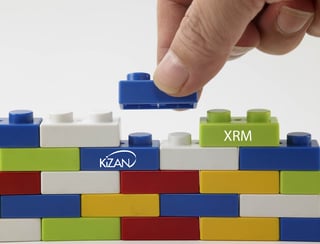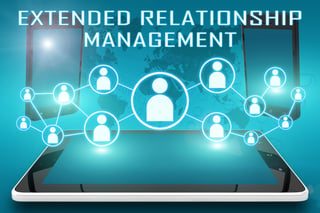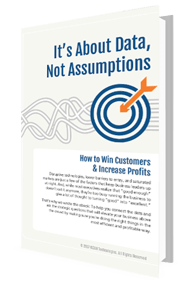
In today's fast-paced business landscape, staying ahead of the competition requires efficient and effective solutions. According to Microsoft’s Work Trend Index, nearly 70% of employee report that they don’t have sufficient time in the day to focus on “work”, with more time being spent Communicating than Creating.
Microsoft 365 Copilot is designed, with Microsoft’s cloud trust platform at its core, to allow for employees to both be more productive, reduce the time spent searching for information, performing mundane tasks, and other low-value activities.
One of my favorite toys as a kid was Legos. It was that awesome feeling I got from creating something out of nothing. Usually, I would make some monster truck – it was the late ‘70s, early ‘80s, and Big Foot was a big deal. But I digress. So we weren’t building something out of “nothing”. We were starting with some building blocks that the Lego company provided.

No question there is a lot of thought, planning and precision engineering put into manufacturing those pieces so that they all fit together perfectly. As smart as we were, building a plastic Big Foot replica without those building blocks would have been beyond our ability. So we start with a pile of seemingly unrelated plastic blocks, wheels, people (with and without heads), shrubs, chimneys, car parts, etc. and create something entirely new from the seemingly random pieces. Fun!
Additionally, there are sets which come with specific pieces and instructions to build some very sophisticated products (helicopter, dinosaur, Millennium Falcon, you name it). But even when I got a set I would usually wind up modifying it. I was never satisfied just creating something someone else designed – what’s unique about that? Yeah, I can follow instructions, but why not get creative? So the output from my sets usually had extra appendages, firepower, a cowcatcher, etc.
The relative usefulness of these extras is where my analogy starts to break down. What analogy do you ask? I suppose I should get to the point.
The term XRM refers to the practice of eXtended Microsoft Dynamics CRM. If you are familiar with Dynamics CRM, then you know it is an industry leading Client Relationship Management system. What you may not know is that CRM was created on an incredibly flexible development platform.

The primary “out of the box” functionality in CRM are Sales Force Automation, Customer Service, and Marketing. These areas of functionality all center around key data elements Accounts, Contacts, Opportunities, and Leads. Getting back to my Lego analogy: Let’s look at the Sales Force Automation functionality. You can compare it to a Lego “set” where the processes, data structures, and interface are already planned out and just need configuration.
In little time, you have a functioning SFA application. Now, if I want to modify my SFA application, the CRM platform is flexible enough that I can make those changes. If I want to add some additional fields to capture more information about a contact, for example, the CRM platform makes it very easy to do so, without programming. At this point we've only scratched the surface of XRM, as we are extending our “set”.
To take it one step further (and continue the Lego analogy - sorry), I don’t have to use a set at all. I can build my own by configuring any Lego blocks together in any way I choose. But in the same way, Legos allowed me to create my own rendition of the Big Foot monster truck, I’m still not starting from “nothing.” The Dynamics CRM platform provides me with some standard building blocks which allow me to create some very sophisticated software, but certain things are in place that just fit together.
In the same way I don’t need to mold, form, and cut each plastic Lego block every time I want to assemble my newest wheeled vehicle, CRM (using the XRM concept) takes care of certain standard, repeatable activities. When I create new entities, CRM creates all of the database components, relationships, and provides a basic set of editable forms so I can allow my users to interact with the data. As opposed to a “pure” custom development project, I don’t have to manage a database or program a user interface. These things are taken care of for me, I just need to tell it what those components look like (snap these wheels to the bottom of the truck bed). I’m fitting together my Legos in a unique (and hopefully useful) way, and I can do so very quickly because the pieces were designed to fit together.
Pulling out of my tired analogy, once I have the core building blocks in place, I can use the CRM Application Programming Interface (API) to leverage those building blocks in any way imaginable. I can write custom web, mobile, or desktop applications which interact with CRM as the foundation, while presenting, manipulating, and storing that information in a custom application. An example might be developing a website which allows Clients to log in and update information we have stored about them. The client logs into a secure site, change some information in their profile (address for example), and that information updates immediately in our CRM system.

Many things are accomplished with Dynamics CRM that is not necessarily what most people think of as traditional “CRM”. But by starting with CRM and being creative, we can take advantage of the fact that it comes out of the box with a pre-built way to manage data about people (contacts), companies (accounts), and encounters with those people and companies (opportunities/leads). In every business, many processes are revolving around those key components, and the CRM platform using the XRM concept is an ideal launch pad to start. With all the groundwork prepared the sky is the limit.
So if you’re already using Dynamics CRM in the traditional sense and have some processes around those contacts, accounts, and opportunities that aren’t necessarily traditional or if you are looking for a platform to create something new and want an excellent way to get partway there – consider XRM.
 Are you optimizing standardization, documentation, and automation?
Are you optimizing standardization, documentation, and automation?
Learn more in our free ebook!
It's About Data, Not Assumptions
[How to win customers & increase profits]





